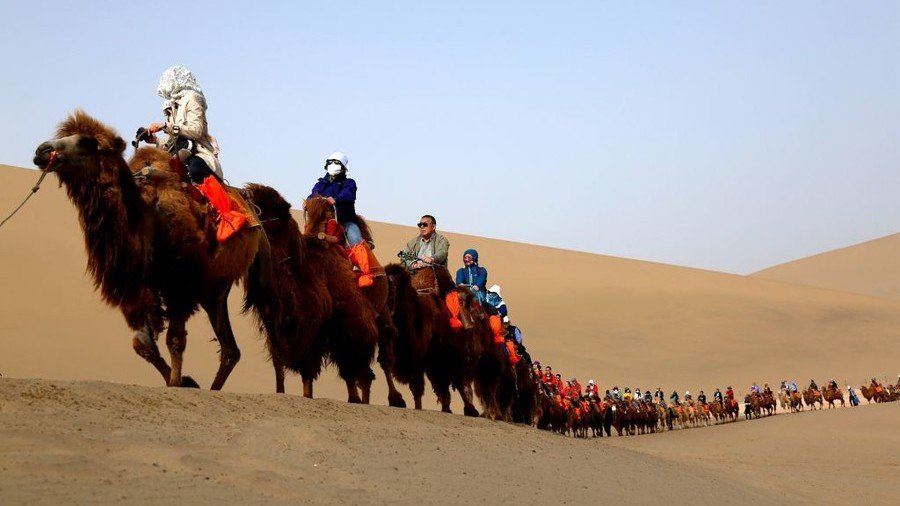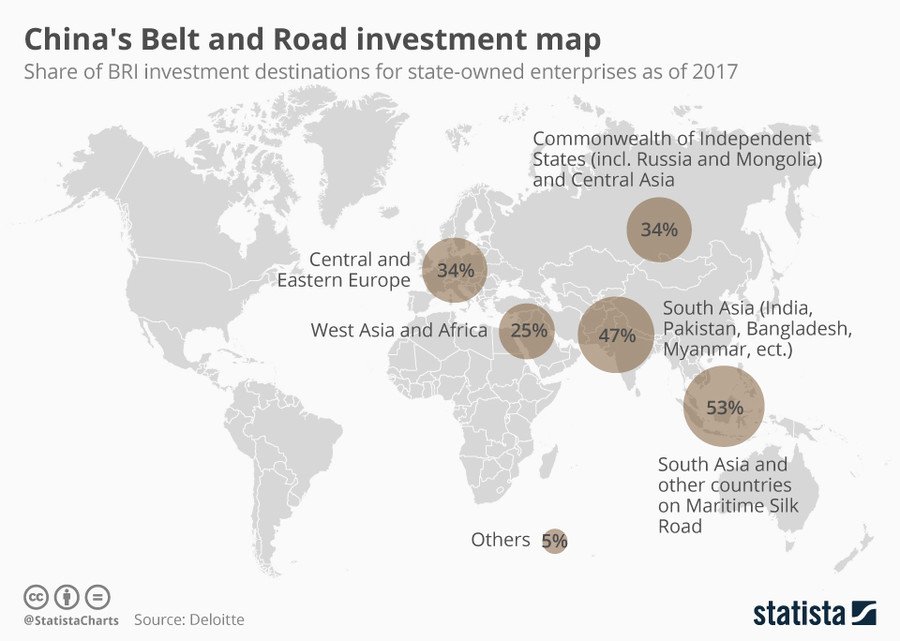China's ‘One Belt, One Road’ global investment plan mapped out

This year marks the fifth anniversary of the Belt and Road initiative, proposed by Chinese authorities in the autumn of 2013. The ambitious project is aimed at creating infrastructure networks linking Europe, Asia and Africa.
So far, the challenging project has attracted around 100 countries across three continents. The new infrastructure project links Asia, Europe, and Africa through a network of railroads and shipping lanes, and is set to reach South America.
The ambitious economic cooperation campaign, also known as the Silk Road Economic Belt, was initially represented by two major segments. The first, the Silk Road Economic Belt, refers to a half-dozen land corridors linking China with Southeast Asia, South Asia, West Asia, the Middle East and then with Europe. The second, the 21st Century Maritime Silk Road, is a sea route linking Asia, Africa and Europe.
China's ‘One Belt, One Road’ is a 'win-win' for Gulf countries – minister https://t.co/O0xPumy6gapic.twitter.com/0NriJcx9DS
— RT (@RT_com) May 12, 2018
The Silk Road was a land route across Europe and Asia used by ancient and medieval merchants to carry silk and other commodities by camel or horse to and from China, Persia and the Roman Empire.
China has invested heavily into the project with reported $900 billion having been spent on projects in partner countries. As part of the broader initiative, a 336 kilometers (209 miles) rail line was constructed to link Budapest and Belgrade, a gas pipeline was built in Pakistan, and a high-speed rail link was launched in Thailand.
Most of the investment projects of the Belt and Road initiative have reportedly benefitted China’s state-owned corporations. Statista's Agne Blazyte has visualized distribution of Chinese heavy investments connected to the project across the world. As the map shows, Southeast Asia remains a high priority for China, while India, Pakistan, Bangladesh and Myanmar are among other important beneficiaries.

For more stories on economy & finance visit RT's business section














